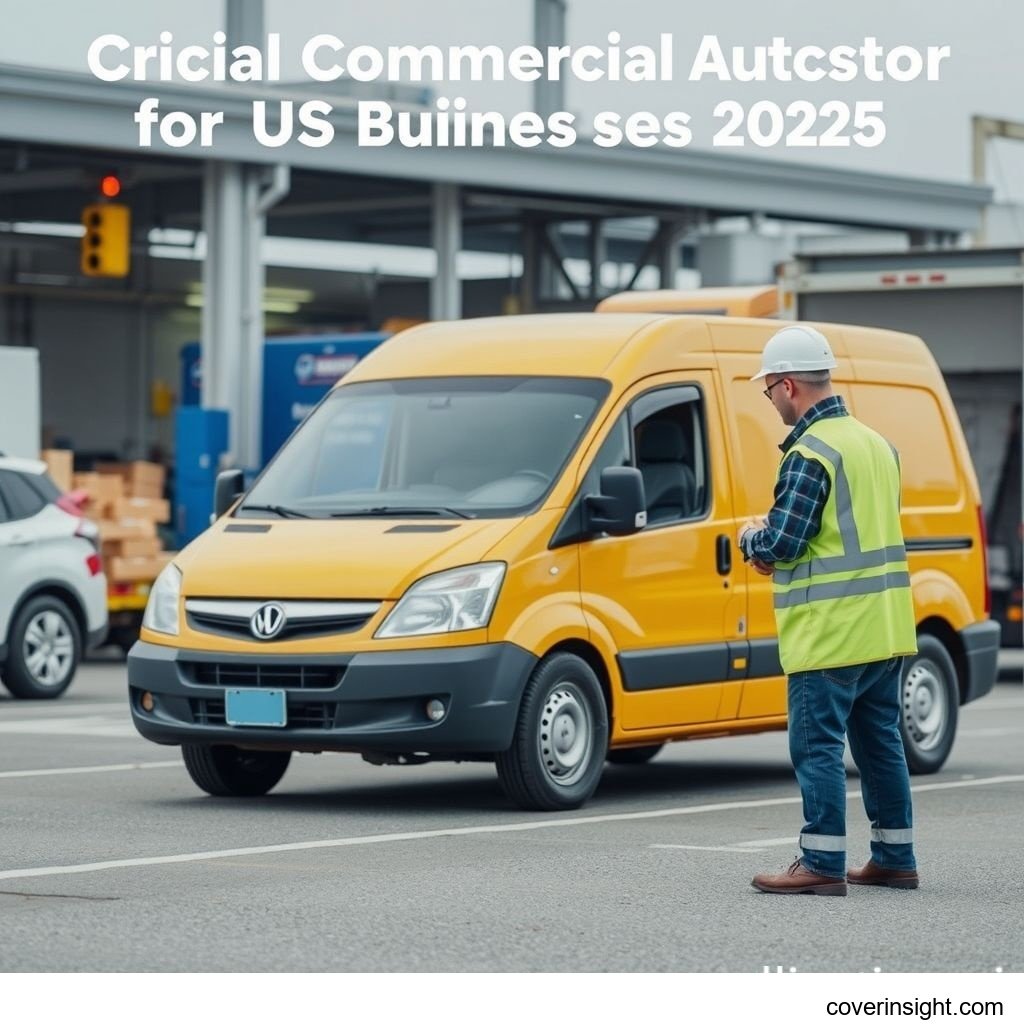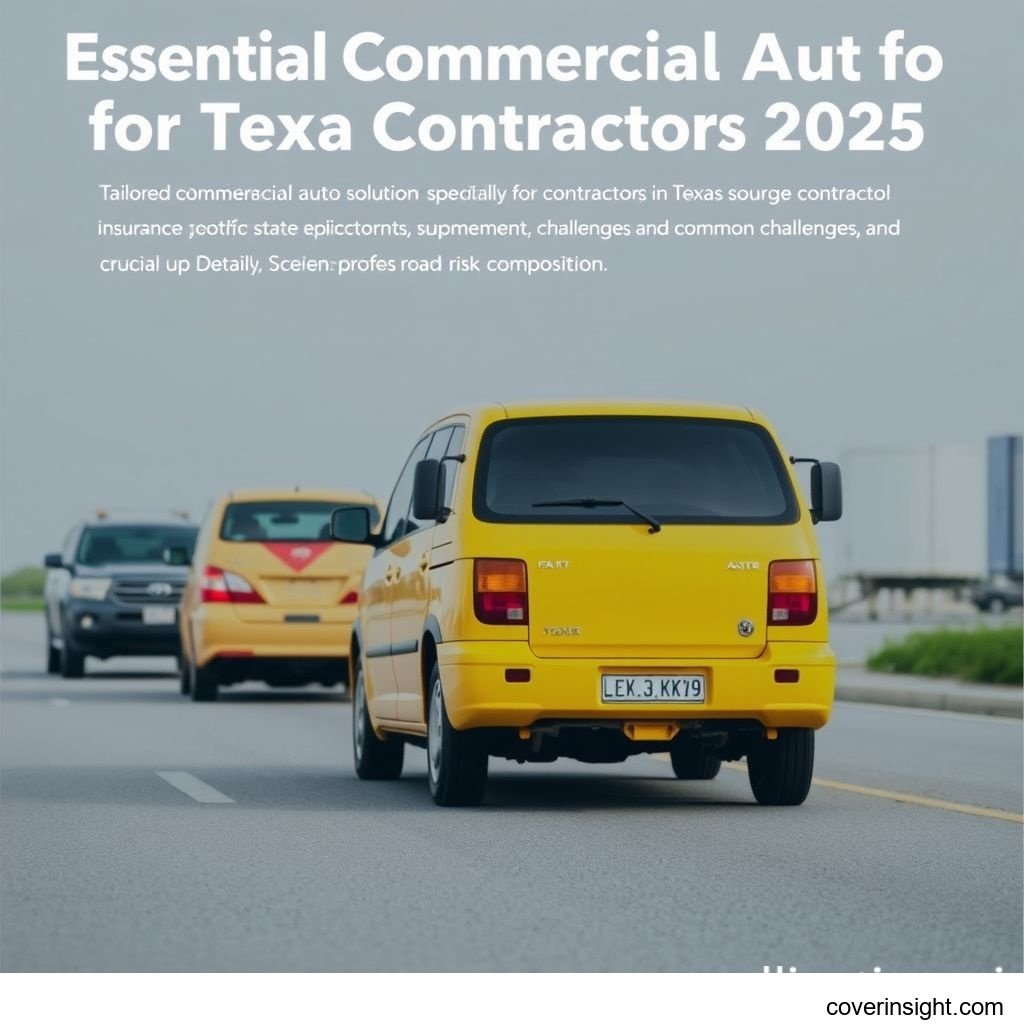Crucial Commercial Auto Insurance for US Businesses 2025
Introduction
For any US business relying on vehicles – whether it's a bustling delivery service, a construction company, or even a small consulting firm with a single company car – commercial auto insurance isn't just another line item; it's a non-negotiable safeguard. As we move into 2025, the complexities of operating a business, combined with evolving traffic landscapes and rising litigation costs, underscore the immense importance of having robust coverage. This isn't just about ticking a regulatory box; it's about protecting your assets, your employees, and your very livelihood from unforeseen road hazards. Understanding the nuances of [Smart Commercial Auto Insurance for US Businesses 2025] is paramount for ensuring your operations run smoothly and your investments are secure. For a broader overview of protecting your enterprise, you might find our insights on [US Insurance Home] helpful.
Coverage Details
What’s Included
A comprehensive commercial auto insurance policy typically wraps several layers of protection into one package, providing a safety net for a variety of scenarios. At its core, Liability Coverage is king. This crucial component covers the costs if your business vehicle is at fault in an accident, paying for bodily injury to others (including medical expenses, lost wages, and pain and suffering) and property damage to their vehicles or other assets. It's the bare minimum required by most states, designed to protect third parties.
Beyond liability, Collision Coverage steps in to repair or replace your own vehicle if it's damaged in a collision with another vehicle or object, regardless of fault. Think of a delivery van getting into a fender bender; this coverage takes the sting out of the repair bill. Then there's Comprehensive Coverage, which handles damage to your vehicle not caused by a collision – events like theft, vandalism, fire, natural disasters (hail, floods), or even hitting an animal. It’s the "act of God" and non-collision damage protector.
Furthermore, Uninsured/Underinsured Motorist Coverage is a lifesaver, covering your costs if you or your employees are involved in an accident with a driver who either has no insurance or insufficient coverage to pay for the damages they caused. Given that an estimated 1 in 8 drivers are uninsured, this can be a real game-changer. Lastly, Medical Payments (MedPay) or Personal Injury Protection (PIP) covers medical expenses for you and your passengers, regardless of who was at fault, a vital component especially in no-fault states. For instance, consider "ABC Landscaping" in Florida. A driver from their team was hit by an uninsured motorist, leading to significant injuries. While the other driver vanished, ABC Landscaping's robust commercial auto policy, including high uninsured motorist limits, ensured their employee's medical bills and lost wages were covered, preventing a financial catastrophe for both the employee and the business.
Common Exclusions
While robust, commercial auto policies aren't a blank check for every scenario. It’s crucial to understand what’s typically not covered. For starters, personal use of a company vehicle is almost always excluded unless specifically endorsed onto the policy. If an employee takes the company car for a weekend joyride and gets into an accident, don't expect the commercial policy to pay up. Intentional acts – such as an employee purposely ramming a vehicle – are also typically excluded, as are damages resulting from wear and tear, mechanical breakdowns, or a vehicle being used for illegal activities (e.g., street racing). Damage caused by war, nuclear events, or civil unrest also falls outside the scope of standard coverage. Moreover, if a vehicle isn't explicitly listed on your policy, it's generally not covered. Many businesses also overlook the need for specific non-owned auto coverage if employees regularly use their personal vehicles for company business, assuming their personal insurance will handle it (which it often won't, due to commercial use exclusions).
Cost Analysis
Price Factors
The cost of commercial auto insurance isn't a one-size-fits-all number; it's a dynamic figure influenced by a multitude of factors, much like a complex recipe where each ingredient changes the flavor. Key among these are the type of business you operate and its associated risk profile. A long-haul trucking company, for instance, faces higher premiums than a small bakery delivering cakes locally. The types and number of vehicles also play a huge role – larger, more expensive vehicles or a big fleet will naturally cost more to insure.
Driver records are paramount; a history of accidents or traffic violations among your employees will send premiums soaring. Insurance companies thoroughly check Motor Vehicle Reports (MVRs) for this reason. The coverage limits and deductibles you choose directly impact the price: higher limits mean more protection but also higher premiums, while higher deductibles can lower premiums but mean more out-of-pocket expense in a claim. Location matters significantly too; urban areas with higher traffic density and theft rates typically have higher premiums than rural ones. For example, according to the Federal Motor Carrier Safety Administration (FMCSA), while fatal crashes involving large trucks and buses decreased from 2021 to 2022, the economic cost of crashes involving commercial motor vehicles is still substantial, highlighting the inherent risks and the need for adequate coverage, especially in high-traffic states like California or Texas. Finally, your claims history with previous insurers will be a strong indicator to potential providers. A history of frequent or large claims will likely lead to higher rates.
Saving Tips
While commercial auto insurance is a significant expense, there are smart strategies to keep those premiums from breaking the bank. First off, shop around. Don't just stick with the first quote you get. Different insurers have different underwriting appetites and pricing models, so getting multiple quotes can really pay off. Many businesses find that bundling policies – purchasing their commercial auto, general liability, and property insurance from the same provider – can lead to substantial discounts.
Consider increasing your deductibles. While this means you'll pay more out-of-pocket if a claim arises, it can significantly lower your annual premiums. Instilling a culture of safety is crucial; maintaining good driver records across your fleet is arguably the best way to keep costs down. Implement rigorous safety programs, conduct regular driver training, and enforce strict policies against distracted driving. Installing telematics systems in your vehicles can also offer discounts, as they allow insurers to monitor driving behavior (speeding, harsh braking) and reward safer fleets. Lastly, make it a point to review your policies regularly with your broker, perhaps annually. Your business needs evolve, and so should your coverage. For more comprehensive advice on navigating various insurance options, explore [Insurance Resources Global].
FAQs
-
How much does commercial auto insurance cost?
The cost varies widely, typically ranging from a few hundred dollars annually for a single vehicle with basic coverage to tens of thousands for large fleets with extensive coverage. Factors like vehicle type, industry, driver history, and location all play a significant role.
-
What affects premiums?
Premiums are primarily affected by the type of business, number and type of vehicles, driver records (MVRs), chosen coverage limits and deductibles, geographic location, and the business's past claims history.
-
Is it mandatory?
Yes, commercial auto insurance is mandatory in almost every US state. Each state sets minimum liability requirements. Businesses are typically required to carry at least basic liability coverage to legally operate vehicles on public roads. You can find detailed requirements by visiting your [State Insurance Departments] or checking resources from the [National Association of Insurance Commissioners].
-
How to choose?
Choosing the right policy involves assessing your business's specific risks, understanding the types of coverage available, and comparing quotes from multiple reputable insurers. Consider your fleet size, the nature of your operations, and your financial capacity for deductibles. Working with an experienced independent insurance agent can be invaluable.
-
Consequences of no coverage?
Operating without mandatory commercial auto insurance can lead to severe consequences, including hefty fines, vehicle impoundment, suspension of business licenses, and even criminal charges. More importantly, in the event of an accident, your business would be solely responsible for all damages, injuries, and legal fees, which could easily lead to bankruptcy. Just as having individual health coverage is crucial and managed via platforms like [Healthcare.gov], ensuring your business has the right auto insurance is equally vital to its financial health and longevity.
Author Insight & Experience: Based on my experience living in the US and observing countless small and medium-sized businesses, it’s clear that cutting corners on commercial auto insurance is a gamble that rarely pays off. I've seen firsthand how a single uninsured accident can unravel years of hard work, turning a thriving enterprise into a financial liability overnight. It's not just about protecting your assets; it's about protecting your peace of mind and ensuring that your employees and the public are adequately covered should something go sideways. While premiums might seem like a significant outlay, they are a fractional cost compared to the potential legal fees, settlements, and reputational damage that arise from a serious incident without proper protection. Think of it as a strategic investment in your business's resilience.








Comments